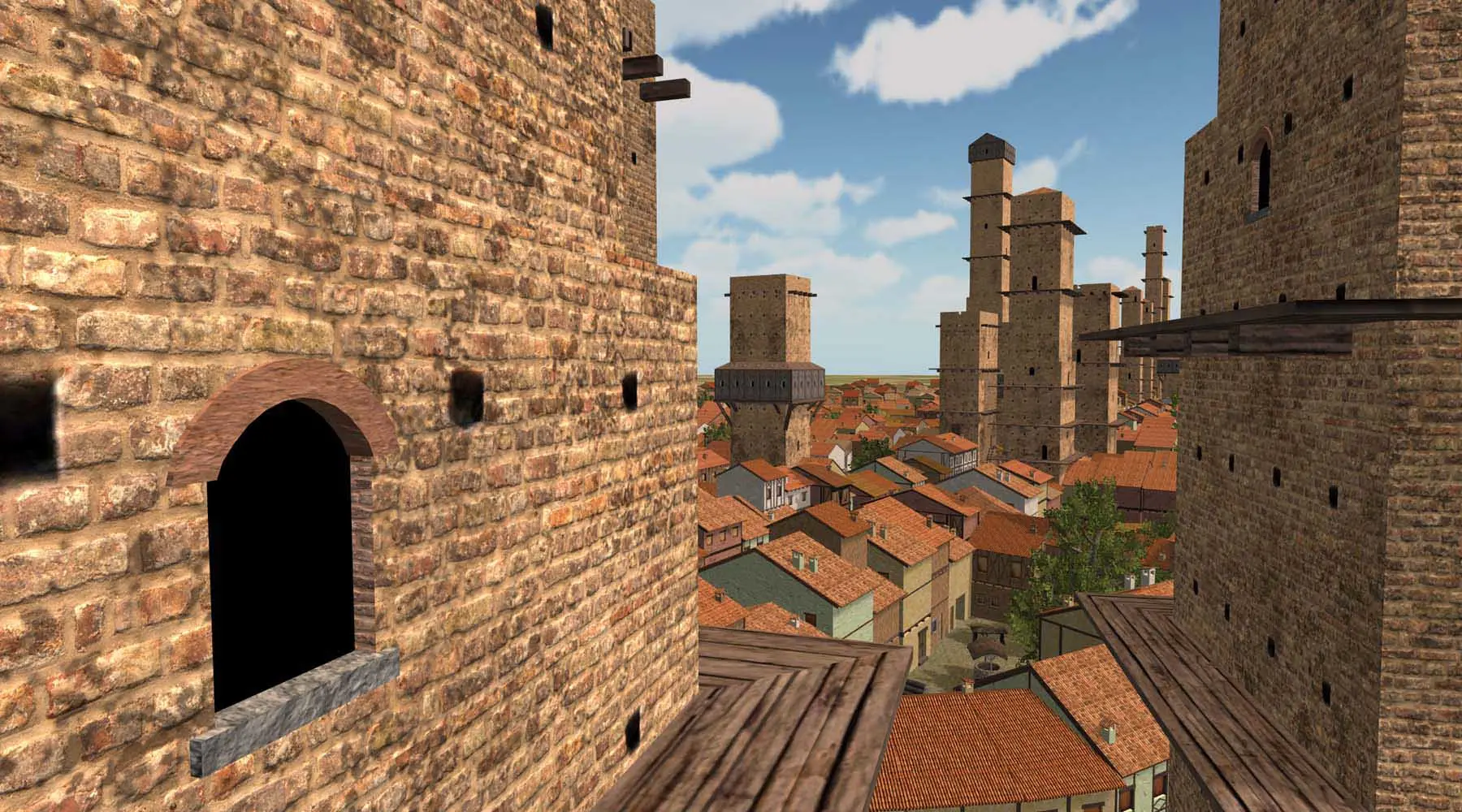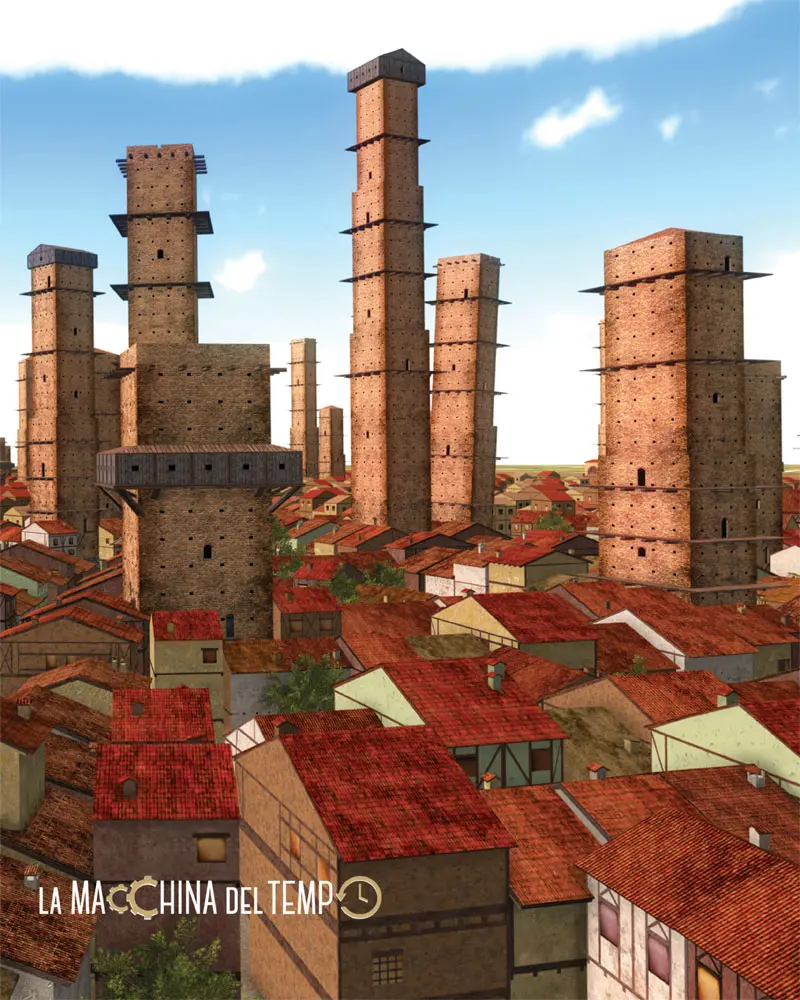

A 2km squared area in the centre of Medieval Bologna is reproduced, including the Basilica of Santo Stefano and the ancient noble towers rising up over the city (with the famous Asinelli and Garisenda towers standing out in particular). The towers that can still be seen today were restored to their former original glory together with those that no longer exist, and all were perfectly reconstructed and placed on the map after detailed research using historical sources. All the main monuments are also accompanied by a short description. The houses and their courtyards were recreated on the basis of historically coherent models; a successful exercise in historical approximation was also carried out in modelling the medieval citizens.
A 2km squared area in the centre of Medieval Bologna is reproduced, including the Basilica of Santo Stefano and the ancient noble towers rising up over the city (with the famous Asinelli and Garisenda towers standing out in particular). The towers that can still be seen today were restored to their former original glory together with those that no longer exist, and all were perfectly reconstructed and placed on the map after detailed research using historical sources. All the main monuments are also accompanied by a short description. The houses and their courtyards were recreated on the basis of historically coherent models; a successful exercise in historical approximation was also carried out in modelling the medieval citizens.

Educational
La Macchina del Tempo is not a video game in the strictest sense of the term, but an infortainment product, a museum installation, a 3D reconstruction of Bologna in the 18th century designed for the HTC Vice virtual reality headset. After putting on the headset, the user can move freely through the streets of Medieval Bologna, walking or teleporting using the pointing system on the Vive controller; they can fly over or cross the city as if it were a miniature model, in Gulliver Mode.